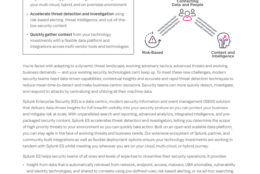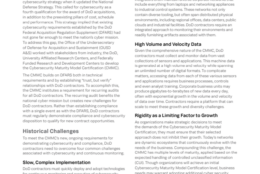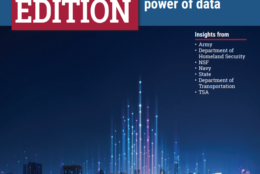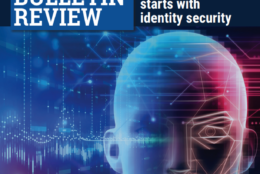SDFM The Business of Defense
-
The Federal Housing Finance Agency started out its zero trust journey by looking at what was missing. We talk to FHFA Chief Information Security Officer Ralph Mosios about monitoring more network traffic and users under zero trust. “The more that you can automate, the faster you can respond,” Mosios said.
November 01, 2022 -
Beyond glasses and contacts, discover a few reasons why you should take a holistic approach to eye health and vision benefits as you make your health care insurance selections for yourself and your family during Open Season this year.
October 31, 2022 -
With users and devices accessing services from anywhere at any time, network as a service, application-aware routing and zero trust become critical. We talk with experts from Verizon to learn what modernizing the network looks like now.
October 28, 2022 -
Although there’s some disagreement over when agencies will actually start benefitting from them, many agencies are currently laying the foundation to start using SBOMs.
October 28, 2022 -
Beth Macy joins hosts Mark Masselli and Margaret Flinter to discuss "Raising Lazarus: Hope, Justice, and the Future of America's Overdose Crisis."
October 27, 2022 -
In this exclusive webinar edition of Ask the CIO, learn about the mission and how data is being used for better decision making at the Navy Reserve. Host, Jason Miller and guests, Capt. Kathleen Powell, the force data officer with the Navy Reserve and Capt. Chris Peppel, chief information officer with the Navy Reserve, will dive into data and ROI.
October 27, 2022 -
Behind every successful federal contractor is a contract management team that deftly blends human and technology expertise to gather institutional knowledge, offer critical customer insights and drive revenue. Find out how they do it!
October 27, 2022 -
In our new ebook, we learn from leaders across the government — at the Army, Homeland Security, NSF, Navy, State, Transportation and TSA — how they are progressing in using data faster to make smarter decisions.
October 27, 2022 -
In this exclusive ebook, we take a deep dive into efforts at the Army Software Factory, CISA and DISA to share strategies and insights — particularly at a time that agencies simultaneously want to deliver more data and services to users at the edge.
October 26, 2022 -
Are you looking for an IT solutions provider that understands your agency’s requirements and timeline? Affigent and Dell Technologies provide accelerated solutions to address your IT modernization needs.
October 21, 2022 -
The Federal Aviation Administration’s long-term modernization of the national airspace (NAS) is turning that crucial network into what Chief Data Officer Natesh Manikoth calls an info-centric NAS.
October 21, 2022 -
Open Season is the best time to reexamine the dental plans available to federal employees and TRICARE retirees, as plans and premiums may be changing.
October 21, 2022 -
Micky Tripathi, Ph.D., National Coordinator for Health IT at the U.S. Dept. of Health and Human Services, is excited about this change and its ability to empower patients.
October 21, 2022














